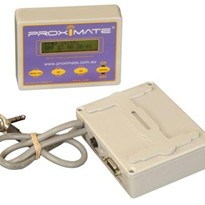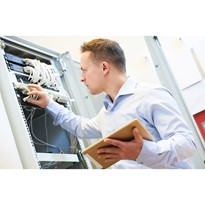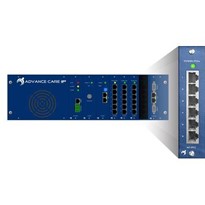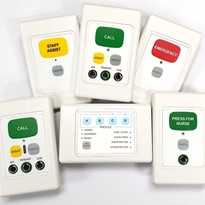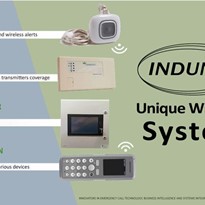Today’s platforms are a world away from the basic hospital nurse call bell; they're the sophisticated digital backbone supporting patient safety and staff coordination in healthcare facilities across Australia.
Moving Beyond the Basic Call Bell
Forget the old bedside button. As a result of advancing technology, modern nurse call systems have become the digital nervous system for patient care, especially within Australia's demanding hospital and aged care environments. They’ve evolved from simple, reactive alerts into intelligent communication hubs that are absolutely central to patient safety and staff efficiency.
These systems do more than just provide a reliable line of communication between patients and caregivers. They now serve as the central platform for a whole range of assistive technologies and fall prevention devices, creating a seamless safety net for every single resident or patient. This integration is where the real magic happens, turning a simple call for help into a proactive safety strategy.
The Hub for Integrated Patient Safety: Nurse Call Systems
At its heart, a nurse call system connects a person in need with the right staff member at the right time. But its role has expanded far beyond that. A modern system acts as the integration point for a whole suite of healthcare products designed to protect vulnerable individuals.
This network of connected devices works together to build a smarter, safer environment. For example:
- A wireless sensor mat by the bed can automatically alert staff the moment a high-risk individual tries to stand up, allowing for intervention before a fall happens.
- A PIR motion sensor can track movement in a room, notifying staff of unusual activity that could signal distress or a fall risk.
- Wearable fall detection devices can summon help instantly and automatically if a fall occurs, even if the person can't press a button.
All this crucial information feeds directly into the central nurse alarm systems, giving caregivers a complete, real-time picture of a patient's status and enabling a faster, more informed response.
By connecting various fall prevention alarms and sensors, a nurse call system shifts from being a simple communication tool to a proactive falls monitor, significantly improving safety outcomes in aged care and hospital settings.
Australian Compliance and Specialised Support for Nurse Call Systems
For aged care managers, hospital administrators, and facility owners in Australia, choosing a system is a huge decision. It’s not just about the technology—it’s about reliability, compliance with strict local standards, and dependable ongoing support. This is why partnering with a specialist supplier is so important.
Horizon, through our dedicated aged care and health care business, Indigo Care, is a leading Australian provider of these vital solutions. We understand the unique challenges of the local healthcare landscape because we live and breathe it every day. We’re committed to delivering reliable, Australian-compliant nurse call systems and assistive technology that empowers facilities to prevent falls, enable rapid emergency responses, and create the safest possible environments for everyone in their care.
Understanding the Core Components of Modern Systems
To really get your head around modern nurse call systems, it helps to picture them as a facility's central nervous system. Every piece has a specific job, and they all work together to create a responsive, life-saving network that keeps patients safe and empowers caregivers.
The whole process kicks off with the patient. The old-school hospital nurse call bell has come a long way, evolving into a sophisticated patient call point. These handsets often have multiple buttons to signal different needs—like a simple request for water versus a genuine medical emergency. This is the starting line, giving residents a direct line to help.
From that button press, the signal zips to the system's brain: the central console or monitoring station. Usually found at the nurses' station, this hub gives staff a live snapshot of all incoming calls. It's here they can prioritise alerts, speak directly to patients through an intercom, and dispatch the right team members.
Visual and Mobile Alerting Components and an Alert System
Being able to see an alert at a glance is crucial. That’s where over the door, corridor lights, mounted above patient room doors, come in. They’re a simple but incredibly effective tool. When a call is triggered, the light flashes, often using different colours to show the urgency of the request. It’s an instant visual guide, directing staff straight to where they’re needed most.
But staff aren't always glued to a central desk. Modern systems make sure alerts reach them wherever they are, sending notifications to mobile devices like specialised handsets or pagers. This freedom is a game-changer in large facilities, ensuring the closest staff member can respond instantly.
The Ecosystem of Integrated Assistive Technology
The real magic of today's nurse alarm systems is how they connect with a whole range of assistive technology. This integration shifts the system from being purely reactive to a proactive safety net. At Indigo Care, we specialise in bringing these components together to build a seamless solution that protects patients 24/7.
Key Components and Their Functions: Nurse Call Systems
This ecosystem of fall prevention devices features specialised sensors that act as extra sets of eyes and ears for your care team. Below is a quick look at how the key parts of a nurse call system work together to create a reliable safety net.
|
Component |
Primary Function |
Benefit for Care Staff |
|
Patient Call Point |
Enables residents to request help directly from their bed or room. |
Provides a clear communication line for immediate understanding of needs. |
|
Central Console |
Displays all active calls, urgency levels, and patient details. |
Centralised management for efficient prioritisation and staff dispatch. |
|
Corridor Lights |
Visual indicators outside a room when a call is active. |
Helps staff quickly locate residents needing assistance. |
|
Mobile Handsets/Pagers |
Deliver alerts and call details to mobile staff. |
Improves mobility and reduces response times. |
|
Fall Prevention Sensors |
Bed alarms, floor mats, and PIR sensors that detect movement or falls. |
Proactive alerts that allow timely intervention. |
|
Reporting Software |
Tracks calls, response times, and staff activity. |
Provides data-driven insights to enhance workflows and care quality. |
By combining these elements, facilities can build a smart, connected system that enhances resident safety and staff efficiency.
Bed Alarms and Sensor Mats: Wireless or floor sensor mats detect when a high-risk resident tries to stand, sending an instant alert.
PIR Motion Sensors: Monitor movement and alert staff to unusual activity, such as nighttime wandering.
Fall Detection Devices: Wearable devices automatically trigger alarms if a fall occurs, summoning help even if the resident can’t press a button.
Together, these integrated health care products create a proactive safety framework that empowers caregivers to act before an incident happens—supporting both resident wellbeing and staff performance.
How These Systems Transform Patient Safety and Care
A good nurse call system does far more than simply send a message from A to B. In fact, it completely transforms the care environment by helping staff move from reacting to problems toward actively preventing them. As a result, it becomes the essential bridge between smart technology and real-world outcomes, enhancing patient safety while also giving healthcare teams the tools they need to deliver consistently better care. Ultimately, the most immediate benefit is faster staff response times — and when every second counts, that improvement can be a true game-changer.
Moreover, this transformation is especially relevant here in Australia. With an ageing population and the continued rise of chronic diseases, healthcare facilities are under more pressure than ever before. Consequently, many providers are now turning to the advanced nurse call systems Australia trusts to keep communication fast, reliable, and effective.
However, it’s important to recognise that these systems go well beyond basic alerts or call buttons. Today, they form the backbone of intelligent, integrated care networks designed to improve both safety and workflow efficiency. In particular, they play a critical role in fall prevention — one of the most pressing challenges in aged care. By connecting bed sensors, motion detectors, and wearable devices, modern nurse call systems create a digital safety net that continuously monitors residents and alerts staff the moment assistance is needed.
In this way, technology is no longer just supporting healthcare — it’s reshaping it, ensuring every patient receives faster, safer, and more proactive care.
Shifting from Reaction to Prevention
Think about the traditional call bell. It usually rings after something has already happened. Modern nurse call systems, when paired with a range of fall prevention devices, flip this script entirely. The focus is no longer on reacting to a fall but on stopping it from ever happening.
Let's take a common scenario: a high-risk resident in an aged care facility often tries to get out of bed without help. With a basic call button, staff would only know there's a problem after the resident has already fallen. But with an integrated system, the story is completely different.
A wireless sensor mat placed by the bed can send an instant alert to the nearest caregiver the second the resident's feet touch the floor. This early warning gives staff enough time to get there, offer help, and prevent a serious injury.
This proactive approach is what modern patient safety is all about. It’s not just about being faster; it’s about being smarter. Devices like bed alarms, chair pressure sensors, and PIR motion sensors all feed vital information into the main system, giving staff the heads-up they need to act first. You can learn more about how different types of sensor mats minimize fall risks and see this technology in action.
Using Data to Elevate Standards of Care
Another huge advantage of modern nurse alarm systems is their ability to gather and analyse data. Every call, response, and alert is logged, creating a goldmine of information for managers and clinical leaders. This isn’t just about ticking boxes for compliance; it's about turning daily operational data into powerful insights.
By reviewing these reports, managers can:
- Identify Care Trends: Are calls spiking at certain times of the day? This might point to a need for more staff during peak hours or a change in daily routines.
- Optimise Staff Workflows: The data can reveal bottlenecks in how staff are dispatched, leading to smarter workflows that cut down response times and spread the workload more evenly.
- Evaluate Device Effectiveness: Are specific fall prevention alarms going off often? This could signal that a particular resident needs their care plan reviewed or requires more support.
- Benchmark Performance: Facilities can track their response times and incident rates, setting clear goals for improvement and showing a real commitment to high-quality care.
This data-driven mindset allows facilities to make smart, informed decisions that have a direct impact on patient wellbeing. It turns a falls monitor from a simple alert device into a strategic tool for quality assurance. For those interested in the wider impact of technology on care, exploring different senior living technology solutions offers a great overview of these advancements. At the end of the day, these systems, like those from Indigo Care, create a safer, more responsive, and more efficient environment for everyone involved.
Choosing Between Wired and Wireless Systems: Nurse Call Systems
Deciding whether to install a wired or a wireless nurse call system is one of the biggest calls a facility manager will make. There's no single right answer here—the best choice really comes down to your facility’s unique situation, from the age of the building to your long-term goals. This decision shapes everything from the initial budget and installation process to day-to-day reliability and future expansion plans.
Getting this right means understanding what makes each technology tick. Wired systems are the gold standard for reliability, while wireless systems bring unmatched flexibility to the table. As expert consultants, Horizon and our aged care and health care specialists at Indigo Care are here to walk you through it, making sure you find the perfect fit for your Australian facility.
This decision tree breaks down the fundamental impact of putting a comprehensive system in place.
Ultimately, investing in the right system is a direct line to improving patient safety and reducing risk.
The Case for Wired Nurse Call Systems as an optimal Communication Platform
The wired nurse call systems Australia has relied on for years are famous for one thing: rock-solid stability. Because they’re physically cabled into the building's infrastructure, they are almost completely immune to the signal interference that can sometimes disrupt wireless devices. This hardwired connection creates a secure, dependable closed-loop system you can count on.
This bulletproof reliability makes them the go-to choice for new hospital builds or major renovations. When you can lay the cabling from the ground up, you’re building a powerful, interference-free network designed to last for decades. While the initial setup is more involved, the long-term payoff is a system that simply works, day in and day out, without a fuss.
Market data backs this up. Wired communication technology is projected to be the fastest-growing part of the Australian nurse call market. You can dig deeper into Australian nurse call market trends to get a better sense of these figures.
When Wireless Systems Are the Smart Choice
On the other side of the coin, wireless systems offer incredible flexibility and are a breeze to install. For existing aged care homes or hospitals looking to upgrade their tech without kicking off major construction, wireless is often the ideal solution. Installation is quick, with very little disruption to your daily operations or patient care.
That flexibility also makes scaling up much easier. Adding a new call point, integrating a wireless sensor mat, or expanding the system into a new wing is far simpler with a wireless setup. This adaptability is a huge advantage for facilities expecting to grow or change their layout over time.
For older buildings, retrofitting with wireless nurse alarm systems is a complete game-changer. It allows facilities to bring their safety infrastructure into the modern era quickly and cost-effectively, skipping the messy and expensive rewiring projects.
Key Factors to Guide Your Decision
So, how do you make the call? Your decision should really be guided by a few key factors that are specific to your organisation. Think about the following when you’re weighing up your options:
- Facility Age and Layout: Are you working with a brand-new build or a heritage-listed building? The physical constraints of your site will play a massive role in figuring out which system is more practical to install.
- Budgetary Constraints: Wired systems can have a higher upfront cost because of the labour and materials involved. Wireless systems might have a lower initial price tag but could come with ongoing costs for things like battery maintenance.
- Future Scalability: Do you have plans to expand your facility in the next few years? A wireless system could give you the agility you need to grow without headaches.
- Integration Needs: Think about how the system will connect with other health care products and software you use, like bed alarms or electronic health records.
In the end, both wired and wireless systems offer powerful advantages. Understanding the top reasons wired systems are a must-have for healthcare facilities can give you deeper insight into their long-term value. Here at Indigo Care, we can help you analyse these factors to pinpoint the solution that best supports your goals for patient safety and operational excellence.
Integrating Fall Prevention Devices for Proactive Safety
True patient safety, especially in aged care, goes far beyond just reacting to a call bell. To properly protect vulnerable individuals, you need a proactive strategy. This is where integrating specialised fall prevention devices transforms a standard nurse call system into a smart safety network.
By connecting a suite of assistive technologies, a facility can build a responsive environment that actually anticipates risks. It’s all about empowering staff to intervene before an incident happens. This shift from a reactive to a proactive model is the cornerstone of modern care.
Instead of waiting for a resident to press a button after they’ve fallen, integrated systems use sensors to spot the early signs of a risky situation. This gives caregivers that crucial window of opportunity to prevent falls, which sadly remain a leading cause of injury among older Australians.
Building a Proactive Safety Net
The real magic of this approach is layering different types of assistive tech, with each device serving a specific purpose. They all work together, feeding real-time data into the central nurse alarm systems to give staff a complete picture of what's happening in a resident's room.
This ecosystem of health care products creates multiple layers of protection. Think of it this way: a wireless sensor mat at the bedside might be the first line of defence. It can alert staff the moment a high-risk resident tries to stand up. That simple but effective tool can be the difference between a safe assist and a serious injury.
The goal is to create an environment where technology acts as an extension of the care team's eyes and ears. An integrated falls monitor system doesn't replace caregivers; it empowers them with timely, actionable information to enhance their ability to provide care.
Key Technologies for Fall Prevention
A strong fall prevention strategy relies on a combination of specialised devices tailored to the specific risks of a facility or individual resident. As a specialist supplier, Indigo Care provides a full range of the best fall detection devices in Australia, all designed for seamless integration with existing systems.
Here are some of the core components that create this powerful safety net:
Bed Alarms and Sensor Mats: A pressure-sensitive floor or bed mat detects when a resident gets up. The moment weight is removed, an alert is sent, giving staff an early warning that the resident is on the move.
Chair Alarms: Similar to bed alarms, these are essential for residents who stand without assistance. They’re ideal for common areas and lounges, helping staff respond quickly to potential falls.
PIR Motion Sensors: Strategically placed motion sensors monitor activity in high-risk zones, such as paths to bathrooms. They can alert staff to unexpected movement, like nighttime wandering.
Fall Detection Devices: Wearable fall alert devices automatically detect sudden impacts or changes in body position that indicate a fall. They trigger an immediate alert through the nurse call system, summoning help even if the resident can’t press a button.
When connected, these fall prevention devices form a unified system that provides continuous monitoring and rapid response.
By integrating these tools, aged care facilities can build a reliable safety framework that protects residents around the clock. Indigo Care specialises in helping facilities design and implement integrated solutions, ensuring every component works seamlessly to enhance safety and provide peace of mind for residents, families, and staff alike.
Selecting the Right System for Your Australian Facility
Choosing the right nurse call system isn't just a purchase; it's a strategic investment in your facility's future. For managers of Australian hospitals and aged care homes, this decision is about much more than features and price tags. It's about navigating local regulations, ensuring new tech works with your existing setups, and making a choice that will still serve you well in years to come.
A critical first step is ensuring any system you’re considering meets Australia’s strict industry standards. This isn't just a recommendation; it's the benchmark for safety and reliability in patient alarm systems. Going with a non-compliant system doesn't just put patients at risk, it opens your facility up to serious compliance issues.
Key Considerations for Your Facility
Before you get lost in brochures and product demos, it’s best to step back and map out what your facility actually needs. A busy hospital ward has a completely different set of demands than a specialised aged care home.
Here are a few non-negotiables to think about:
- Scalability: Will this system grow with you? You might be adding a new wing in a few years or simply want to integrate more fall prevention devices over time. A good system should make expansion easy, not a headache.
- Integration Capabilities: How well does it play with others? Your nurse call system needs to communicate seamlessly with your other critical software, like electronic health records (EHR), to create a truly efficient workflow.
- Support and Maintenance: What happens when something goes wrong? For mission-critical health care products, you need a supplier with dedicated, local technical support. This isn't just a 'nice to have'—it's essential.
Partnering with a Specialist Australian Supplier
The demand for better, safer care is driving huge growth in the Australian nurse call systems market. You can read more about these Australian market insights from Grand View Research.
In a market expanding this quickly, your best move is to partner with a specialist supplier who lives and breathes the local landscape. Someone who knows Australian standards inside out offers more than just hardware; they provide peace of mind.
This is where Horizon, and our specialist aged care and health care business Indigo Care, really come into our own. We deliver robust, compliant solutions that range from a simple hospital nurse call bell to a sophisticated network of the fall alert devices Australia depends on. Our Arkom Nurse Call System was built from the ground up for Australian healthcare environments. When you work with us, you're not just buying a product; you're gaining a team committed to helping you select, install, and maintain the perfect system for your facility.
Frequently Asked Questions About Nurse Call Systems
Getting into the details of nurse call systems can bring up a lot of questions, whether you're a facility manager or a clinical leader. We get it. Here are some straight answers to the most common queries we hear from healthcare and aged care professionals across Australia.
Can We Integrate New Devices with Our Existing System?
The short answer is yes, in most cases. Modern nurse alarm systems, particularly the IP-based ones, are built to play well with others. This means you can often add assistive tech like wireless sensor mats, bed alarms, or the latest fall detection devices Australia has available right into your current setup.
The key thing, though, is compatibility. You can’t just plug anything in and hope for the best. It's vital to have a specialist like Indigo Care come in and take a look at your existing infrastructure. We can make sure all the components—new and old—can talk to each other properly, creating one seamless safety net from all your health care products.
What Is the Key Difference Between a Bed Alarm and a Floor Mat for Nurse Call Systems?
While both devices fall under the broader category of fall prevention alarms, they actually monitor different activities at different stages. To begin with, think of a bed alarm as an early warning system. When activated, the sensor mat on the mattress detects the moment pressure is removed, immediately alerting staff that a resident is attempting to sit up or get out of bed. In this way, staff can respond before a potential fall occurs.
By contrast, a floor sensor mat serves as the next line of defence. Typically placed beside the bed or near a doorway, it sends an alert as soon as it senses the pressure of someone’s weight. This means the resident is already up and moving, prompting staff to intervene right away.
Together, both devices create a layered approach to safety. Although they function at slightly different points in time, they work toward the same goal — preventing falls and ensuring residents receive help exactly when they need it. Ultimately, this combination provides a more comprehensive and proactive fall prevention strategy for any care environment.
Patient Alert Systems: Are Wireless Systems as Reliable as Wired Ones?
This is a great question, and one we hear all the time. Wired systems have a reputation for being rock-solid because a physical cable isn't affected by signal interference. It’s a direct, stable connection.
That said, today's wireless technology is leaps and bounds ahead of where it used to be. High-quality wireless systems now offer excellent reliability, using secure frequencies and built-in checks to ensure every signal gets through. For facilities that need more flexibility or want to avoid the disruption of running new cables, a wireless system is a fantastic and dependable choice. Ultimately, the best option really comes down to your building’s layout and your day-to-day needs.
At Horizon and our specialist aged care and health care business, Indigo Care, we provide expert guidance to help you select, install, and maintain the perfect system for your facility's unique requirements.
Explore our comprehensive range of Australian-compliant nurse call and fall prevention solutions by visiting our website.




-160x160-state_article-rel-cat.png)

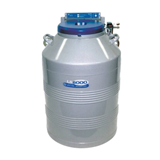



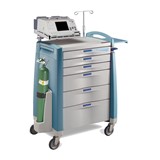



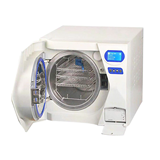



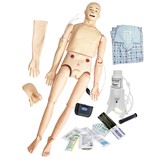
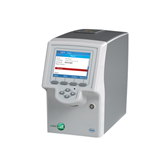







-160x160-state_article-rel-cat.png)


















